Derek Cohen (Perth Oz)
Established Member
One little plane, a 9" smoother in Hornbeam ....
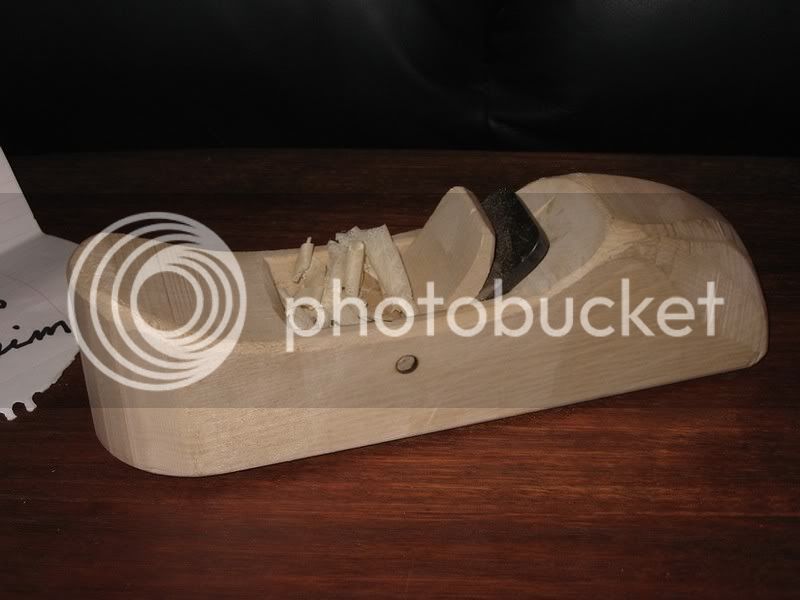
.... From Jim Krenov ...
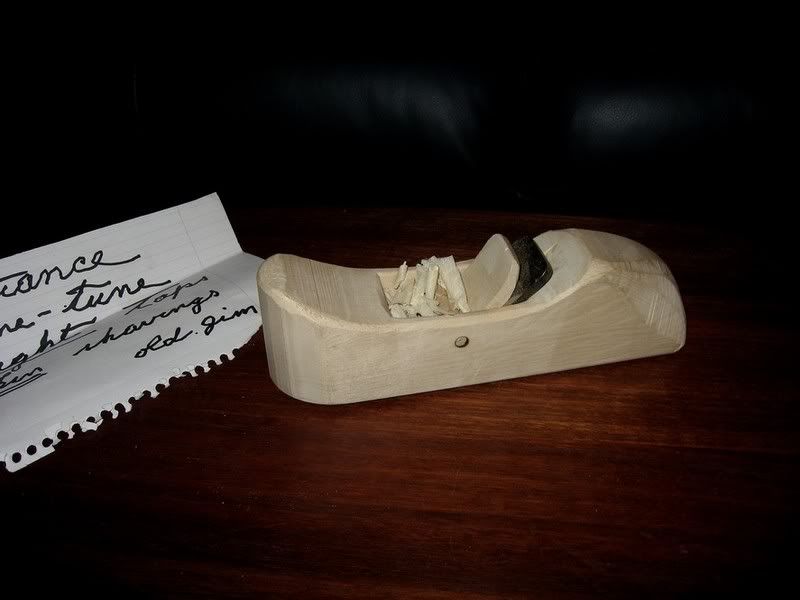
A memento I will long treasure.
This is the story.
James (known as "Jim") Krenov is now in his 80s and has ceased building furniture owing to poor vision. His website displays the last "unfinished" cabinet, with its familiar design for which he is so famous.
For several decades Jim Krenov has inspired generations of oodworkers. He wrote "A Cabinetmakers Notebook", the first of 4 books on the building of furniture. The theme that runs through his writings is the search for the soul of the wood, where design and material blend harmoniously, and where the tool is actually secondary to the method of construction, and that the method of construction is chosen to aid the aesthetics. Of course Krenov viewed good tools as crucial, but they always just the instrument and were guided by the eye and hand of the woodworker. Aesthetics and design of the work piece always came first.
Krenov was known for making his own handplanes. Since these were only tools, their looks mattered little. What was important was that they had to work well. I cannot be certain that he pioneered the laminated construction method, but he was famous for it. Many books were inspired by others along these lines. He would have his students at the College of the Redwoods make their own planes. He made them, used them, gave them away...
There is a strong thread of anti-materialism associated with Krenov. He called himself an amateur. He made beautiful furniture, which was copied by so many. Yet he sold his own pieces for little, while his students sold theirs for more, and the buyers of his pieces made a handsome profit.
About a year ago, after Krenov decided to retire, his son-in-law auctioned
one of his planes on eBay. It looked a lot like my one. This created a storm of controversy that raged on a few forums. Some were outraged that such a tatty plane could be seen to have any value at all - since anyone and their dog could build one in an hour or two. "And it has an orange blade!", someone scoffed. I recall writing in reply that the plane was a wonderful symbol of the artist in his purist form - one who remained focussed on the craft and the creation in the spiritual sense. This tatty old plane made it possible to focus on the task at hand and not become distracted by the beauty of a tool.
The auction became a political affair, an embarrassment for the Krenovs, I fear. The plane sold for about $1100 USD. Jim had expected to get about $250 and was embarrassed by the fuss. He sent the new owner three planes instead of one. To my distress (feeling that it was a case of "here we go again.."), the new owner placed them on eBay a couple of months ago. I do not recall what he got for them but I suspect that one went for about $800 (USD).
The incredible thing was that Jim had advertised that he was prepared to ssell his planes now, and all one had to do was contact him (actually Britta, his wife). Which is what I did. Mine took several months to arrive. I am not sure how many he has sold, but it would not surprise me that it is but a few since, at $350 they are expensive enough to deter the casual buyer, and I wonder if buyers are being vetted in some way? What remains a testament to the honest soul of Jim Krenov (and his family) is that no money passes hands until the plane is received by the buyer.
My own plane is a very plain plane. Britta Krenov contacted me to ask if I would like one made out of Hornbeam. I knew what Hornbeam looks like (it is the same as used by LN for their chisel handles). It is quite undistinguised I have seen other planes that were rich in figure, and so initially my heart sank. I thought about this and my reaction, and recognised that my first response was the type of materialistic reaction that we all have around the glamour tools, such as LN, LV, Marcow, Anderson, etc. And that this was converse to the spirit of Krenov. I realised that this plain plane was the very essence of Krenov, and that it would be the perfect symbol of his ideals and inspiration for me. So I said yes to Britta.
It arrived last night. You see it as it was when I opened the package. In the mouth are shavings made by Jim. It looks rougher than it is. In the hand the plane fits comfortably, amazingly comfortably. For such roughly made pieces, such as the wedge and cross bar, it fits together with a tightness that must be experienced to be believed. I know that there are aspects to the design that are intentional, that were a surprise, and that someone else may just view as "amateurish". Such as an asymmetry to the toe - it makes it comfortable for a right-hander) to hold.
The build construction is a lamination, which is what these planes are famous for. It has been extremely well done - the jointing is first class and the joins hard to see. This Krenov guy seems to know a thing or two.
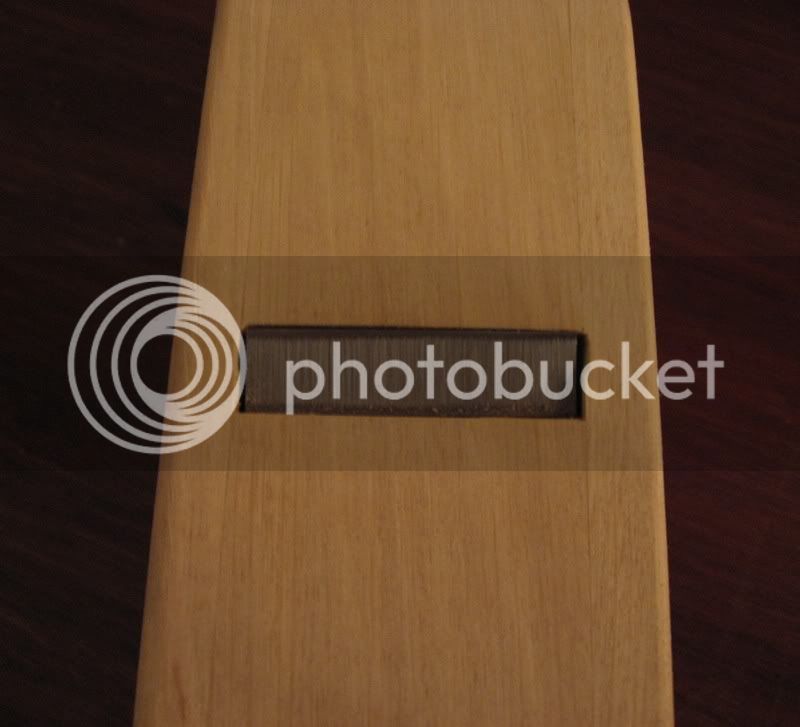
It is indeed super easy to hold and push. What is not apparent in the pictures, and may have missed in those of others (I've not read of these
features in descriptions of JK's planes) is the asymmetry of the toe and
heel. The toe is rounded more on one side so that the palm of a left hand is tucked more into the side.
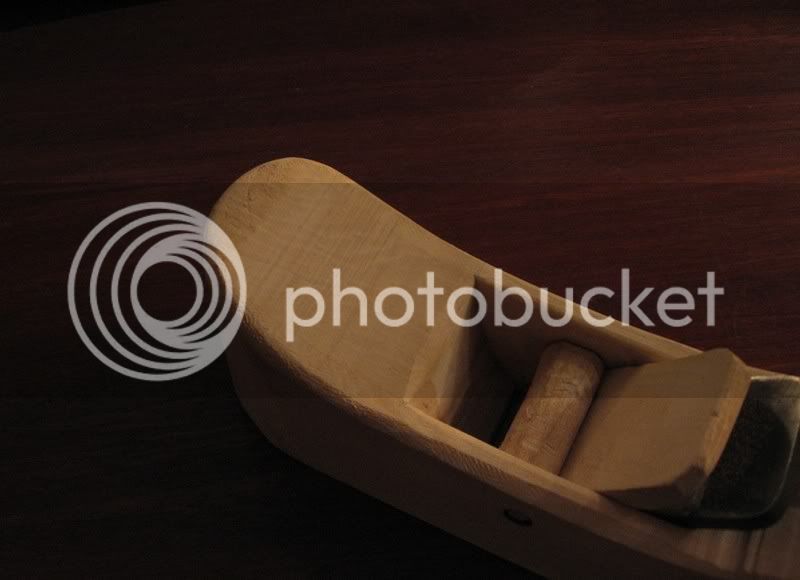
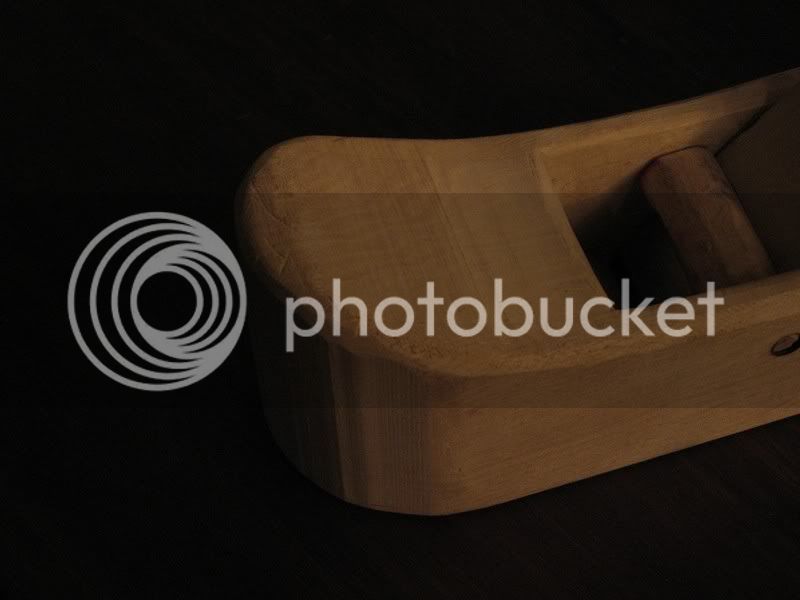
On the heel, the palm of the right hand is similarly considered as there is more wood removed in that section. Not must removed, but enough to fit the palm. These features are only evident when holding the plane.
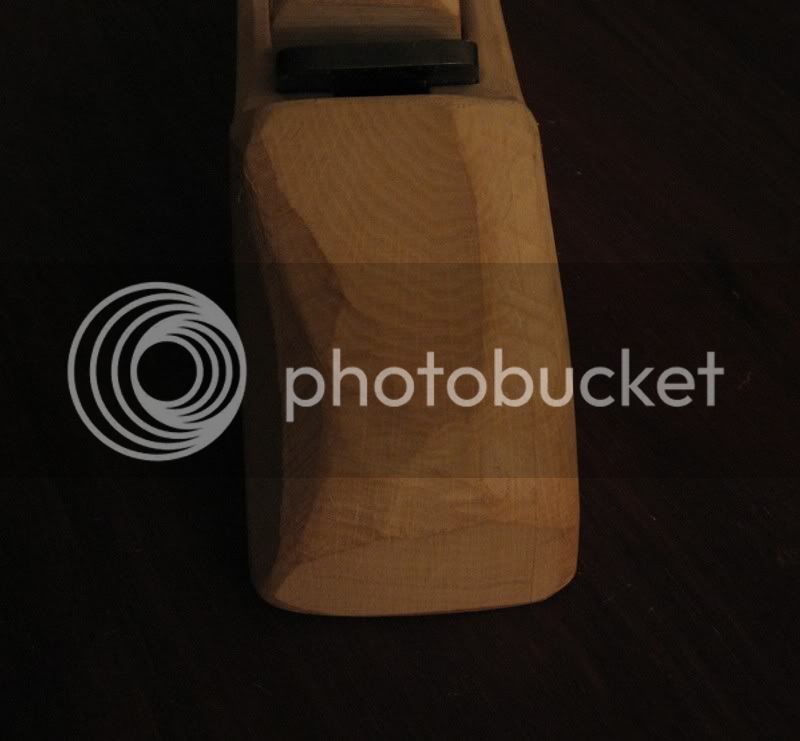
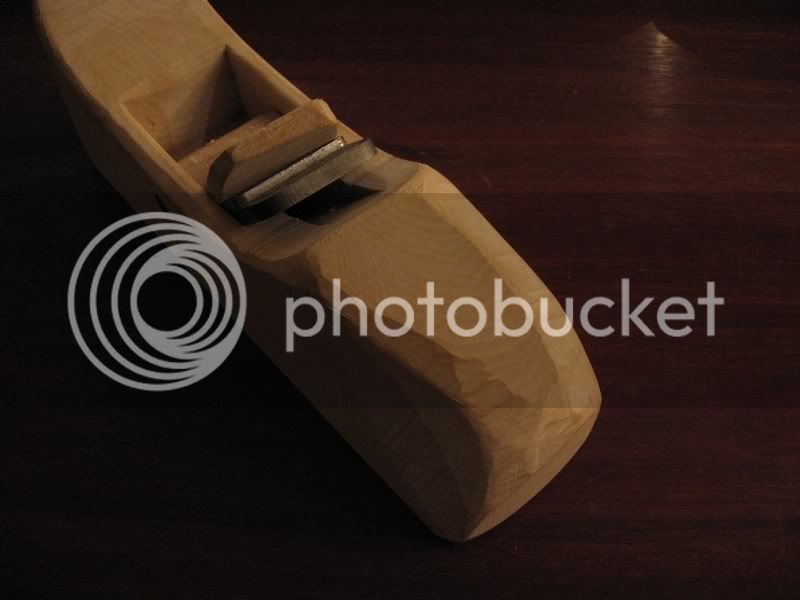
Now I am going to use it to build a Krenov-inspired piece for Lynndy's birthday. I will show you all when it is done.
Regards from Perth
Derek

.... From Jim Krenov ...

A memento I will long treasure.
This is the story.
James (known as "Jim") Krenov is now in his 80s and has ceased building furniture owing to poor vision. His website displays the last "unfinished" cabinet, with its familiar design for which he is so famous.
For several decades Jim Krenov has inspired generations of oodworkers. He wrote "A Cabinetmakers Notebook", the first of 4 books on the building of furniture. The theme that runs through his writings is the search for the soul of the wood, where design and material blend harmoniously, and where the tool is actually secondary to the method of construction, and that the method of construction is chosen to aid the aesthetics. Of course Krenov viewed good tools as crucial, but they always just the instrument and were guided by the eye and hand of the woodworker. Aesthetics and design of the work piece always came first.
Krenov was known for making his own handplanes. Since these were only tools, their looks mattered little. What was important was that they had to work well. I cannot be certain that he pioneered the laminated construction method, but he was famous for it. Many books were inspired by others along these lines. He would have his students at the College of the Redwoods make their own planes. He made them, used them, gave them away...
There is a strong thread of anti-materialism associated with Krenov. He called himself an amateur. He made beautiful furniture, which was copied by so many. Yet he sold his own pieces for little, while his students sold theirs for more, and the buyers of his pieces made a handsome profit.
About a year ago, after Krenov decided to retire, his son-in-law auctioned
one of his planes on eBay. It looked a lot like my one. This created a storm of controversy that raged on a few forums. Some were outraged that such a tatty plane could be seen to have any value at all - since anyone and their dog could build one in an hour or two. "And it has an orange blade!", someone scoffed. I recall writing in reply that the plane was a wonderful symbol of the artist in his purist form - one who remained focussed on the craft and the creation in the spiritual sense. This tatty old plane made it possible to focus on the task at hand and not become distracted by the beauty of a tool.
The auction became a political affair, an embarrassment for the Krenovs, I fear. The plane sold for about $1100 USD. Jim had expected to get about $250 and was embarrassed by the fuss. He sent the new owner three planes instead of one. To my distress (feeling that it was a case of "here we go again.."), the new owner placed them on eBay a couple of months ago. I do not recall what he got for them but I suspect that one went for about $800 (USD).
The incredible thing was that Jim had advertised that he was prepared to ssell his planes now, and all one had to do was contact him (actually Britta, his wife). Which is what I did. Mine took several months to arrive. I am not sure how many he has sold, but it would not surprise me that it is but a few since, at $350 they are expensive enough to deter the casual buyer, and I wonder if buyers are being vetted in some way? What remains a testament to the honest soul of Jim Krenov (and his family) is that no money passes hands until the plane is received by the buyer.
My own plane is a very plain plane. Britta Krenov contacted me to ask if I would like one made out of Hornbeam. I knew what Hornbeam looks like (it is the same as used by LN for their chisel handles). It is quite undistinguised I have seen other planes that were rich in figure, and so initially my heart sank. I thought about this and my reaction, and recognised that my first response was the type of materialistic reaction that we all have around the glamour tools, such as LN, LV, Marcow, Anderson, etc. And that this was converse to the spirit of Krenov. I realised that this plain plane was the very essence of Krenov, and that it would be the perfect symbol of his ideals and inspiration for me. So I said yes to Britta.
It arrived last night. You see it as it was when I opened the package. In the mouth are shavings made by Jim. It looks rougher than it is. In the hand the plane fits comfortably, amazingly comfortably. For such roughly made pieces, such as the wedge and cross bar, it fits together with a tightness that must be experienced to be believed. I know that there are aspects to the design that are intentional, that were a surprise, and that someone else may just view as "amateurish". Such as an asymmetry to the toe - it makes it comfortable for a right-hander) to hold.
The build construction is a lamination, which is what these planes are famous for. It has been extremely well done - the jointing is first class and the joins hard to see. This Krenov guy seems to know a thing or two.

It is indeed super easy to hold and push. What is not apparent in the pictures, and may have missed in those of others (I've not read of these
features in descriptions of JK's planes) is the asymmetry of the toe and
heel. The toe is rounded more on one side so that the palm of a left hand is tucked more into the side.


On the heel, the palm of the right hand is similarly considered as there is more wood removed in that section. Not must removed, but enough to fit the palm. These features are only evident when holding the plane.


Now I am going to use it to build a Krenov-inspired piece for Lynndy's birthday. I will show you all when it is done.
Regards from Perth
Derek

































